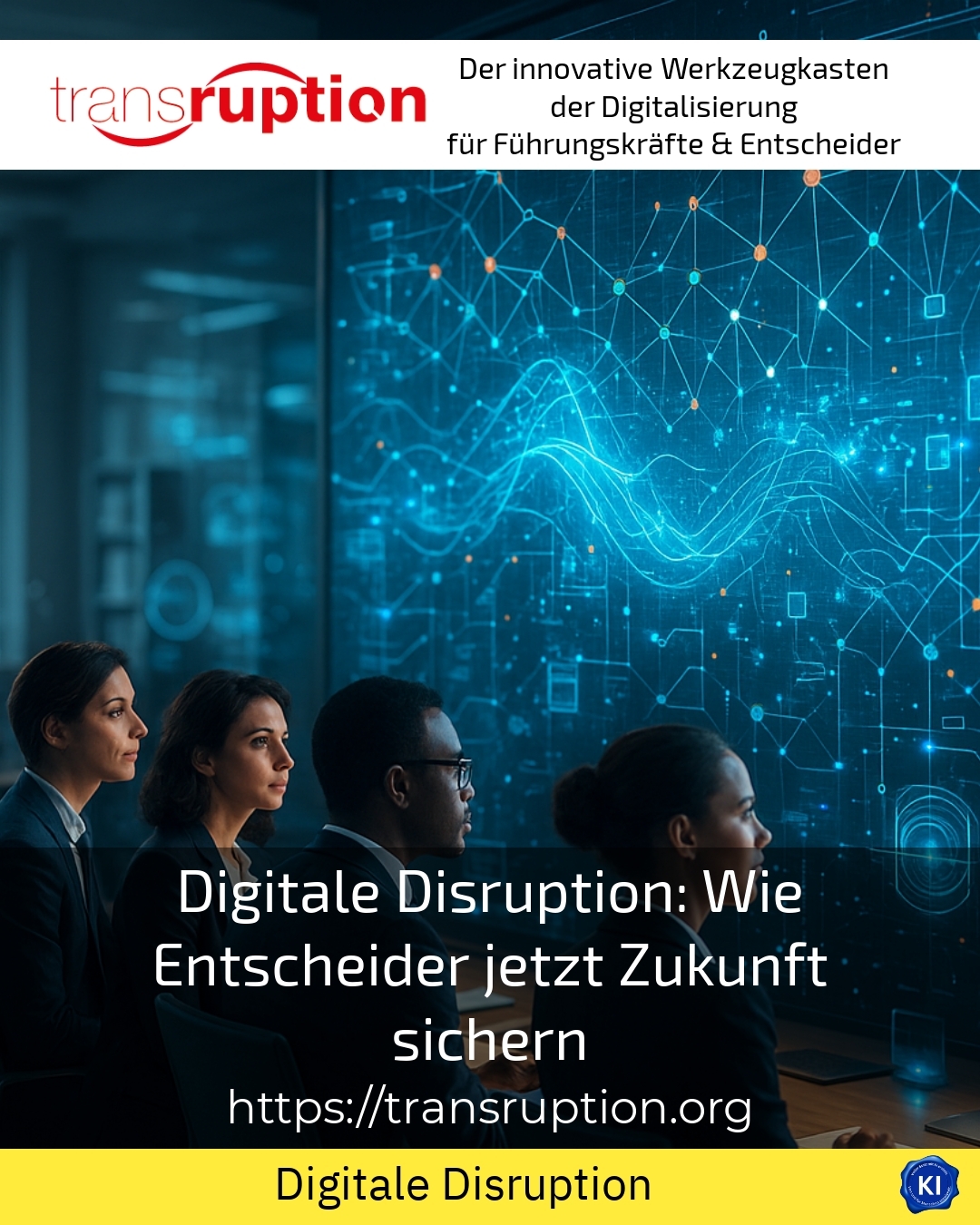Digital disruption is presenting decision-makers with new challenges. Rapid technological progress is radically changing business models and entire industries. If you want to secure your future today, you need to actively address this change and develop suitable strategies. Digital disruption is more than just digitalisation: it describes a far-reaching transformation that breaks up established structures and creates innovative market players.
Understanding digital disruption: Causes and effects
Digital disruption occurs when new technologies replace or fundamentally change traditional products and business processes. Examples such as Airbnb, which revolutionised the accommodation business, or Uber, which is redefining the taxi market, are impressive examples of this change. Industrial players such as Tesla are also driving disruptive processes with electric vehicles and autonomous technology. Decision-makers are confronted with digital innovations and changing customer requirements that demand rapid adaptation.
The spectrum of disruptive technologies ranges from artificial intelligence, which enables personalised customer solutions, to cloud computing, which enables the flexible use of resources. Blockchain technologies are also fundamentally changing financial transactions, while virtual and augmented reality applications are opening up new worlds of experience. It is crucial to understand these technologies not as isolated tools, but as building blocks of a comprehensive digital strategy.
Using digital disruption as an opportunity: Practical examples from various industries
Companies that successfully embrace digital disruption create competitive advantages through greater agility and customer focus. In the retail sector, Amazon has fundamentally changed purchasing behaviour with its online marketplace. The physical bookshop business has shrunk in favour of customer-friendly online orders with fast delivery. In the financial sector, FinTech start-ups such as Revolut are challenging traditional banks by offering mobile payment and investment platforms.
The media industry is also experiencing a paradigm shift thanks to streaming providers such as Netflix. Linear television use is losing importance in favour of flexible, on-demand offerings. In the industrial sector, Thyssenkrupp has rethought passenger transport with innovative TWIN lifts - two cabins share one shaft, significantly increasing efficiency. Such examples illustrate how companies can use digital disruption to reorganise their processes and products and secure market advantages in the process.
BEST PRACTICE at the customer (name hidden due to NDA contract) A leading mechanical engineering company integrated digital sensor technology and artificial intelligence into its production facilities to predict maintenance cycles and drastically reduce downtime. This led to a significant reduction in costs and more precise customer service offerings, which sustainably increased competitiveness in the market.
Recommendations for decision-makers in the digital disruption environment
It is essential for managers not to see digital disruption as a threat, but as a driver of innovation and change. A clear strategy makes it possible to utilise disruptive technologies in a targeted manner and design internal processes in an agile way. It is advisable to form interdisciplinary teams that develop new digital business models and scrutinise existing structures. In addition, dialogue with customers should be intensified in order to recognise their changing expectations at an early stage.
Transformation coaching can provide valuable support during this phase. This coaching supports companies in successfully shaping digital change, minimising risks and exploiting innovation potential. Clients often report that the external view from an independent perspective in particular helps to break down entrenched perceptions and point out new paths.
Practical steps that decision-makers can take include
- Observation of disruptive trends and technologies for early detection
- Promoting an open corporate culture for innovation
- Investment in digital infrastructure and tools
- Creating experimental spaces for trialling new ideas
- Cooperation with start-ups and external technology partners
New business models through digital disruption - actively shaping the future
Digital disruption is changing the way companies create and deliver value. Platforms such as Spotify are examples of how a subscription model has transformed the music industry. Traditional forms of distribution are becoming less important. Similar developments can be observed in the automotive industry, where e-mobility, car sharing and digital services are redefining the market.
Manufacturers and service providers are required not only to optimise products, but also to design the entire customer journey digitally. The networking of devices in the Internet of Things helps to control processes efficiently and realise user-centric offers. Digital disruption requires a rethink towards flexible and scalable business models that can be quickly adapted to market changes.
My analysis
Digital disruption is an unavoidable process that presents companies with far-reaching changes. The opportunities lie in the targeted use of new technologies and business models that can generate sustainable competitive advantages. Decision-makers should proactively shape this change by promoting innovative strength and supporting change with a smart strategy. Transruption coaching offers valuable impulses to help companies secure their future and successfully enter a digitally characterised business world.
Further links from the text above:
[1] Digital disruption at IT portal
[2] Digital disruption: How you can now ...
[3] Digital disruption and megatrends
[4] 7 successful examples of disruptive innovations
[5] Digital disruption - Glossary
[9] Digital disruption: your roadmap to success in change
[10] Disruptive business models: creating new markets
For more information and if you have any questions, please contact Contact us or read more blog posts on the topic TRANSRUPTION here.















